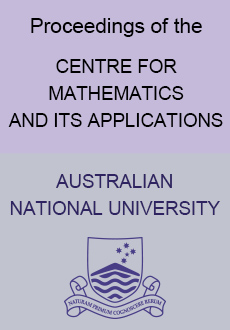Abstract
This project is concerned with an important inverse problem- the use of ultrasound to determine the shape of inclusions (or cavities or flaws) in metal castings. This problem is severely ill-posed both analytically and computationally because it is non-linear and because it is an inverse problem in which the shape of the inclusion need not depend continuously on the available far-field data.
The author has been collaborating with the CSIRO Division of Applied Physics on certain theoretical, computational and practical aspects of this inverse problem. This article gives a progress report on the research project from the mathematician's point of view. The discussions on the project held at the 1986 Summer Research Institute of The Australian :lt!athematical Society are also summarized.
Information


